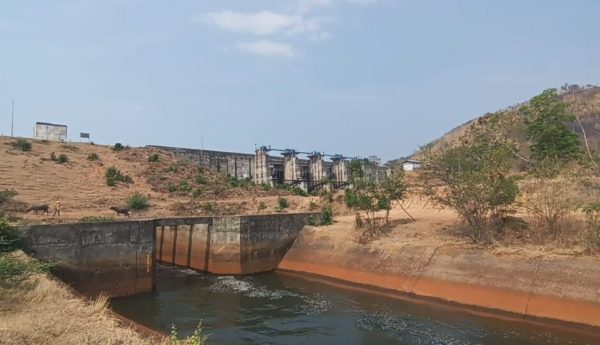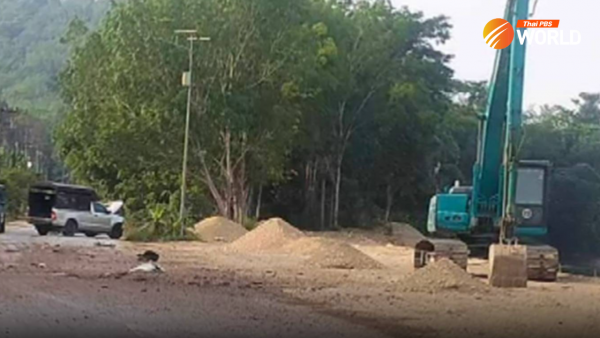Khao Thamorrat, the sacred landmark of Sri Thep
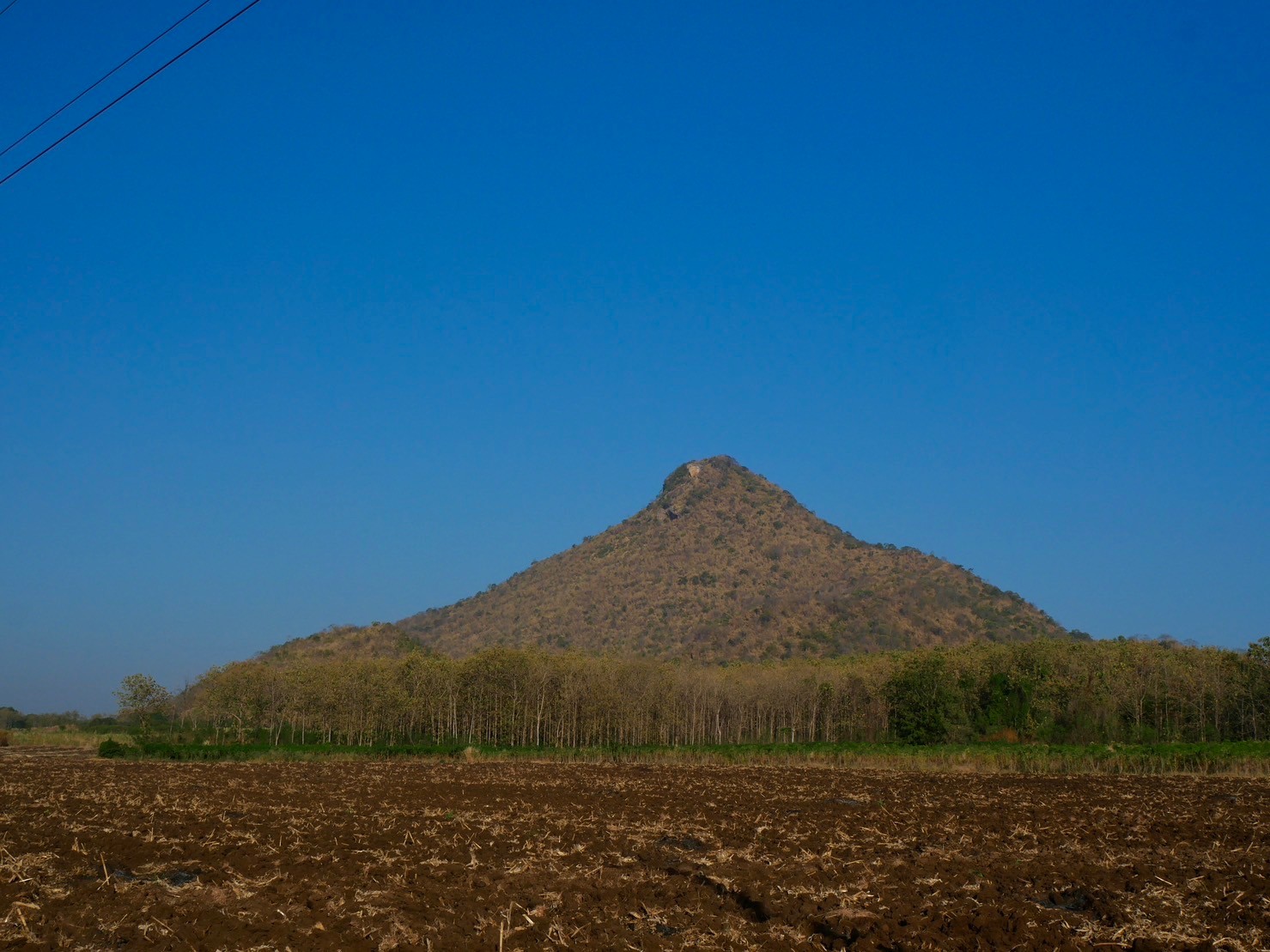
Since UNESCO’s recognition of Sri Thep as a World Heritage site last year, visitors have been flocking to the ruins. Yet few make it to Khao Thamorrat, the sacred mountain of the ancient town.
Located 15 kilometres west of Sri Thep in Phetchabun province, this mountain was the landmark for travellers to the town in pre-historic times. More than 2,000 years ago, it was surrounded by trees and thick forests, so the mountain was the only visual guide.
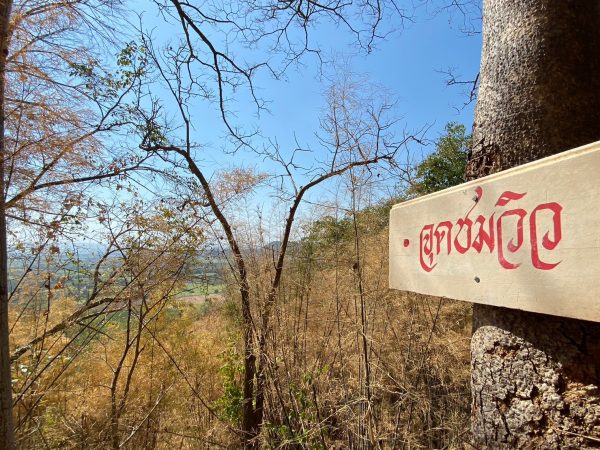
The mountain was also a sacred place of worship for the residents of Sri Thep, with the buildings all constructed to face Khao Thamorrat. Evidence of its religious importance can still be seen today in the low-relief sculptures in Dvaravati style lining a small cave at its peak.
Surprisingly, though, the trail that leads to the top of the undisturbed mountain might start in Sri Thep District but the cave itself is in Wichian Buri District.
From the monastery at the foothill, visitors can climb the mountain, which stands 500 metres above sea level, using the original natural walking tracks. The distance is around 1.5 kilometers but it is very steep and can be tough for those unused to such exertion.
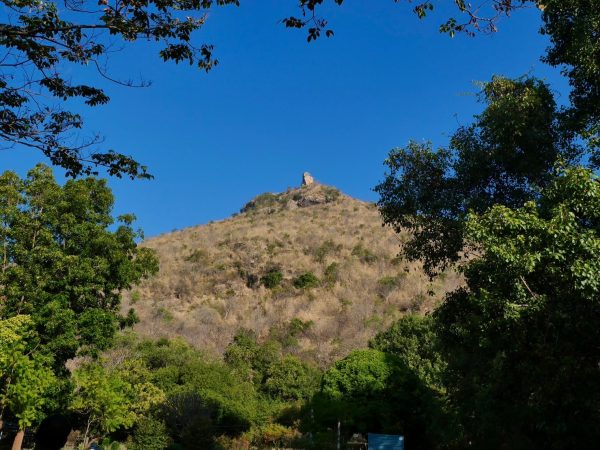
As a comparison, the tallest building in Thailand is only slightly over 300 metres high and a lift whisks you to the top. Here, visitors have to get up there on foot with only a bamboo stick and ropes tied between trees and bamboos for help. The soil is covered with dry bamboo leaves, making it even harder to climb up and down smoothly without slipping.
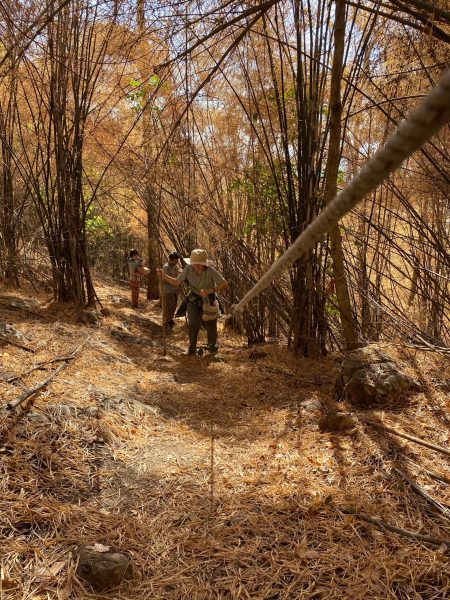
Those wanting to climb to Thamorrat Cave should contact Sri Thep Historical Park and ask for a guide. Although the mountain is mostly covered by bamboo and no thick forest, it is easy to get lost.
Unlike most caves in Thailand which are carved out of limestone, Thamorrat Cave is conglomerate which is very rare. At the entrance, which is only around five metres wide, stands a low-relief sculpture in the Mahayana Buddhist style.
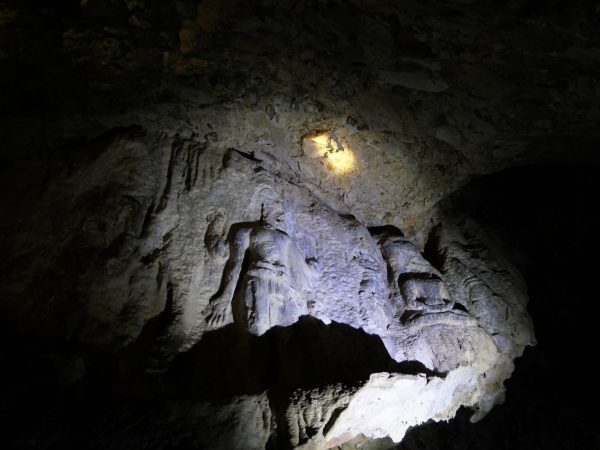
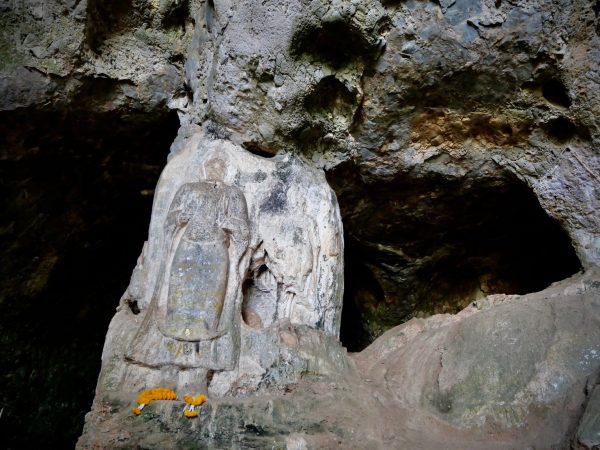
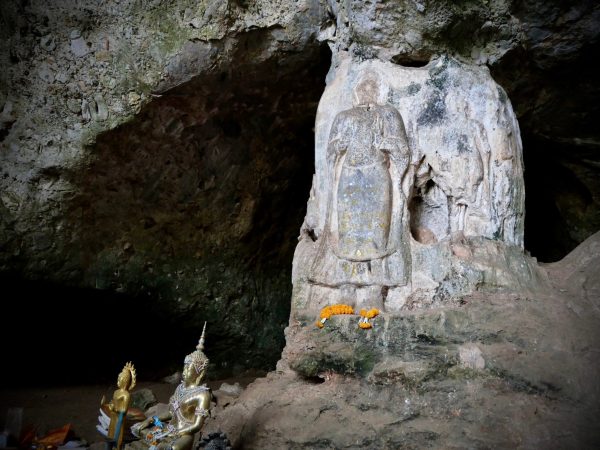
Walking deeper inside the cave, the active stalagmites and stalactites behind the sculpture are immediately apparent and the water that forms them still drips slowly from the cave roof.
Further inside at the darkest point are more Buddha and Bodhisattava statues from the 7th – 8th Century AD.
Unfortunately, the heads of the sculptures were all removed by looters. They were however later found and returned to the government and are now on display at the National Museum in Bangkok with a sign noting they were donated by James Thompson.
A thousand years ago, climbing up to the top of this mountain must have been very difficult and one can only imagine the faith and dedication of those who carried the tools to carve these beautiful sculptures.
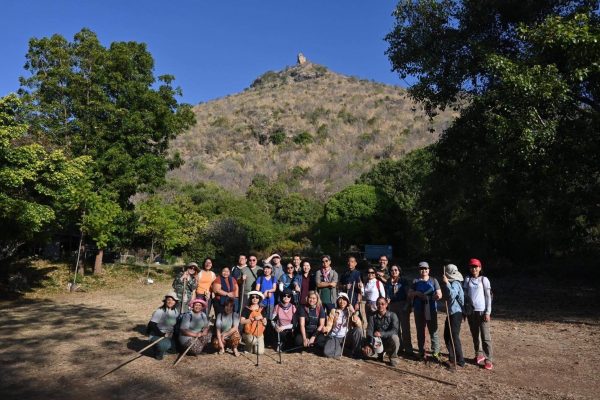
Today, faith in the sacred sculptures of Thamorrat Cave remains strong. Every year in March, locals continue the tradition of climbing to Thamorrat Cave to worship these statues. Visitors can join this tradition and experience for themselves the power of faith.
By Veena Thoopkrajae with additional report by Kanokchan Pattanapichai



